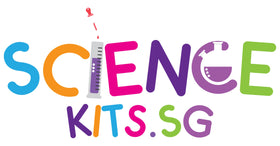
The Evolution of Science Kits: From Basic Chemistry Sets to Advanced Robotics
Science kits have long been cherished educational tools, captivating young minds and fostering a love for discovery and experimentation. Over the years, these kits have evolved significantly, from simple chemistry sets to sophisticated robotics kits. Understanding this evolution can help parents, teachers, and educators choose the best tools to inspire and educate the next generation of scientists and engineers. Let's take a journey through time to explore how science kits have transformed and the impact they've had on STEM education.
The Early Days: Basic Chemistry Sets
Early 20th Century
In the early 20th century, the first science kits focused mainly on chemistry. These basic sets included a variety of chemicals and simple apparatus like test tubes, beakers, and burners. Companies like A.C. Gilbert and Porter Chemical Company were pioneers, aiming to provide educational and entertaining kits for young aspiring chemists.
Key Features:
- Simple chemical compounds
- Basic laboratory equipment
- Experiment manuals
Educational Impact:
These early kits introduced fundamental principles of chemistry, encouraging curiosity and hands-on learning. They laid the groundwork for future science enthusiasts by making science accessible and engaging.
Diversification: Exploring New Scientific Disciplines
Mid to Late 20th Century
As science education gained importance, science kits expanded to cover other disciplines such as biology, physics, and earth science. Kits began to incorporate more complex experiments and a wider range of materials.
Key Features:
- Biology kits with microscopes and slides
- Physics kits demonstrating electricity and magnetism
- Earth science kits with rock samples and fossil replicas
Educational Impact:
This diversification allowed children to explore different scientific fields, broadening their understanding of the natural world and sparking interest in various areas of science.
The Digital Revolution: Electronic and Computer Science Kits
Late 20th Century to Early 21st Century
With the rise of computers and electronic devices, science kits evolved to include electronics and computer science. Kits like Snap Circuits and Arduino starter kits introduced children to the basics of electronics and programming.
Key Features:
- Electronic components like resistors, capacitors, and microcontrollers
- Programming tools and software for creating simple computer programs
- Step-by-step guides for building electronic projects
Educational Impact:
These kits provided practical knowledge of electronic devices and introduced essential coding skills. They helped demystify technology, making it more approachable and engaging for young learners.
Today's Cutting-Edge Kits: Robotics and Engineering
21st Century
Today, science kits have reached new heights with advanced robotics and engineering kits. Brands like LEGO Mindstorms, VEX Robotics, and Makeblock offer kits that enable children to build and program sophisticated robots.
Key Features:
- Programmable hubs and sensors
- Motors, gears, and structural components
- Software for coding and controlling robots
Educational Impact:
These advanced kits teach engineering and programming skills while promoting problem-solving, creativity, and critical thinking. They are instrumental in preparing children for careers in STEM fields and fostering an innovative mindset.
The Future of Science Kits: Integrated and Interactive Learning
Emerging Trends
The future of science kits looks promising with the integration of augmented reality (AR), virtual reality (VR), and artificial intelligence (AI). These technologies are poised to make science learning even more immersive and interactive.
Key Features:
- AR and VR experiences that simulate scientific phenomena
- AI-driven experiments that adapt to the learner's progress
- Real-time data analysis and feedback
Potential Educational Impact:
Such innovations will provide personalized learning experiences and make complex scientific concepts more tangible. They will also enable collaborative learning across distances, connecting young scientists globally.
Why This Matters for Parents and Educators
Understanding the evolution of science kits can help parents and educators choose the best tools to inspire and educate children. Here’s why it matters:
- Engagement: Modern science kits are designed to be more engaging and interactive, keeping children interested and motivated to learn.
- Skill Development: They help develop critical STEM skills, such as problem-solving, critical thinking, and creativity.
- Accessibility: With a wide range of kits available, there's something for every interest and age group, making science education accessible to all.
- Future Readiness: By introducing advanced topics like robotics and coding at an early age, these kits prepare children for future careers in science and technology.
Conclusion
The evolution of science kits from basic chemistry sets to advanced robotics reflects the dynamic nature of science education. These kits have continually adapted to technological advancements and educational needs, making science accessible, engaging, and fun for generations of learners. For parents, teachers, and educators, choosing the right science kit can spark a lifelong passion for discovery and innovation in children, shaping the scientists and engineers of tomorrow.
